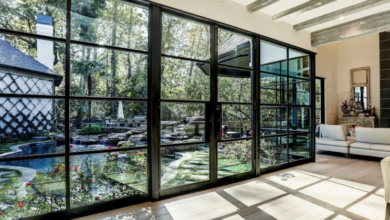Applications of Plywood Veneer in Interior Design and Architecture

Plywood veneer is a versatile and widely used material in interior design and architecture, valued for its aesthetic appeal, durability, and adaptability. From creating elegant furniture to enhancing architectural details, plywood veneer offers numerous applications that can transform spaces with style and functionality. Here’s an in-depth look at how plywood veneer is utilized in various aspects of interior design and architecture.
1. Furniture Design
Plywood veneer is a popular choice for furniture due to its strength and ability to mimic the appearance of solid wood at a lower cost. Here are some specific applications:
- Cabinetry: Plywood veneer is extensively used in kitchen cabinets, bathroom vanities, and storage units. Its durability and resistance to warping make it ideal for these applications, while its attractive finish adds to the visual appeal.
- Tables and Chairs: Dining tables, coffee tables, and chairs made from plywood veneer offer both style and durability. The material can be easily shaped and finished, allowing for a wide range of design possibilities.
- Shelving Units: Plywood veneer is perfect for creating sturdy and stylish shelving units for living rooms, offices, and bedrooms. Its ability to hold weight without sagging makes it an excellent choice for both decorative and functional shelving.
2. Wall Paneling and Cladding
Using plywood veneer for wall paneling and cladding can dramatically enhance the aesthetic of any interior space. Its application includes:
- Accent Walls: Plywood veneer can be used to create stunning accent walls that add warmth and texture to living rooms, bedrooms, or offices. The variety of wood species available allows for a range of finishes from sleek and modern to rustic and traditional.
- Wainscoting: This classic wall treatment involves applying plywood veneer to the lower portion of walls, often topped with a chair rail. It adds a touch of elegance and protects walls from scuffs and damage.
- Architectural Details: Plywood veneer can be used to create unique architectural features such as ceiling beams, columns, and trim. These elements add character and sophistication to a space.
Read also: Customizing Your Furniture with Metal Legs for Tables
3. Flooring
Plywood veneer is also used in the production of engineered wood flooring. This type of flooring combines the beauty of hardwood with the structural benefits of plywood, offering several advantages:
- Stability: Engineered wood flooring made with plywood veneer is less prone to expansion and contraction due to humidity changes, making it a stable choice for various climates.
- Aesthetic Variety: The top layer of engineered wood flooring can be made from various species of wood veneer, providing a wide range of finishes and styles to complement any design aesthetic.
- Ease of Installation: Engineered wood flooring is often easier to install than solid hardwood, making it a popular choice for both DIY enthusiasts and professional installers.
4. Doors and Windows
Plywood veneer is frequently used in the construction of doors and window frames due to its strength and aesthetic appeal:
- Interior Doors: Hollow-core and solid-core interior doors often use plywood veneer for their outer surfaces. This application combines the lightweight properties of plywood with the elegant look of fine wood.
- Exterior Doors: Plywood veneer can also be used in exterior doors, providing a durable and attractive finish that can withstand the elements when properly sealed and maintained.
- Window Frames: Plywood veneer is used in the construction of window frames and sashes, offering a cost-effective alternative to solid wood with similar visual appeal and durability.
5. Custom Millwork and Built-ins
Custom millwork and built-in furniture often incorporate plywood veneer for its versatility and ease of customization:
- Built-in Cabinets and Bookcases: Plywood veneer is ideal for creating custom built-in cabinets and bookcases that maximize space and provide tailored storage solutions. The veneer’s finish can be matched to existing décor for a seamless look.
- Desks and Workstations: Custom desks and workstations made from plywood veneer offer durable and stylish solutions for home offices and commercial spaces. The material’s ability to be shaped and finished to exact specifications makes it perfect for bespoke designs.
- Entertainment Centers: Plywood veneer is used to construct custom entertainment centers that house electronics, media, and decorative items. Its strength ensures the structure can support heavy equipment, while its finish enhances the room’s overall aesthetic.
Conclusion
Plywood veneer is a highly adaptable material that plays a crucial role in interior design and architecture. Its applications range from furniture and flooring to wall paneling and custom millwork, demonstrating its versatility and appeal. Whether aiming for a contemporary look or a classic style, plywood veneer provides a cost-effective and aesthetically pleasing solution for enhancing any interior space. By understanding its diverse uses and benefits, designers and architects can leverage plywood veneer to create functional and beautiful environments.






